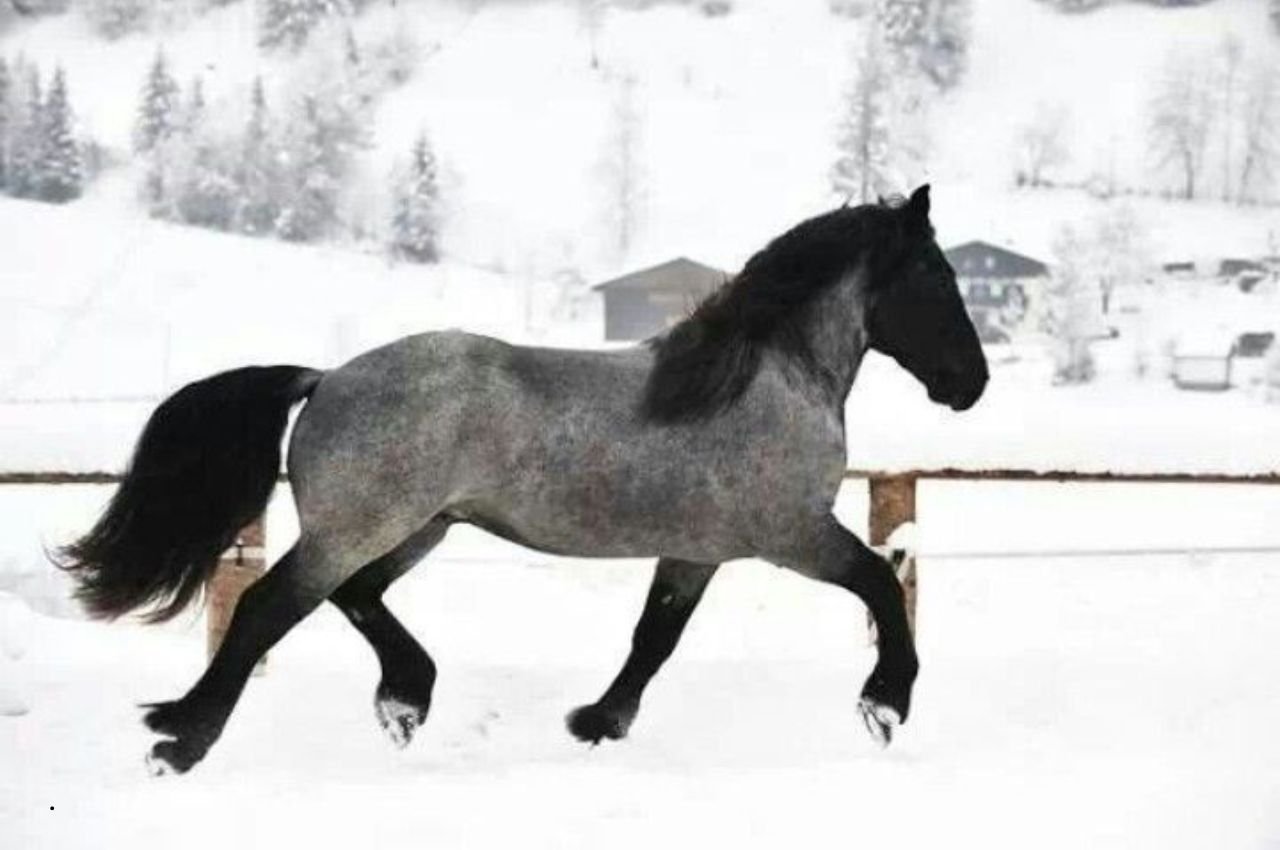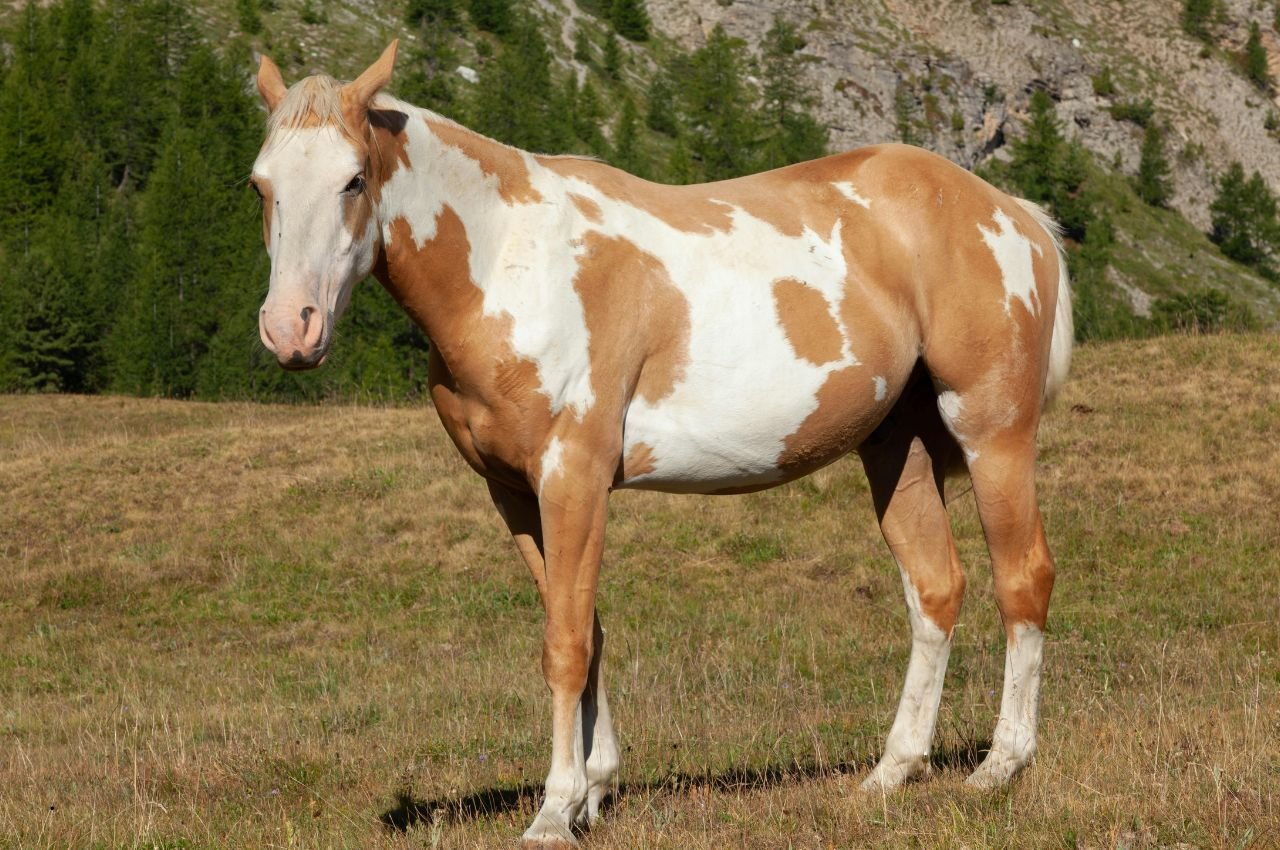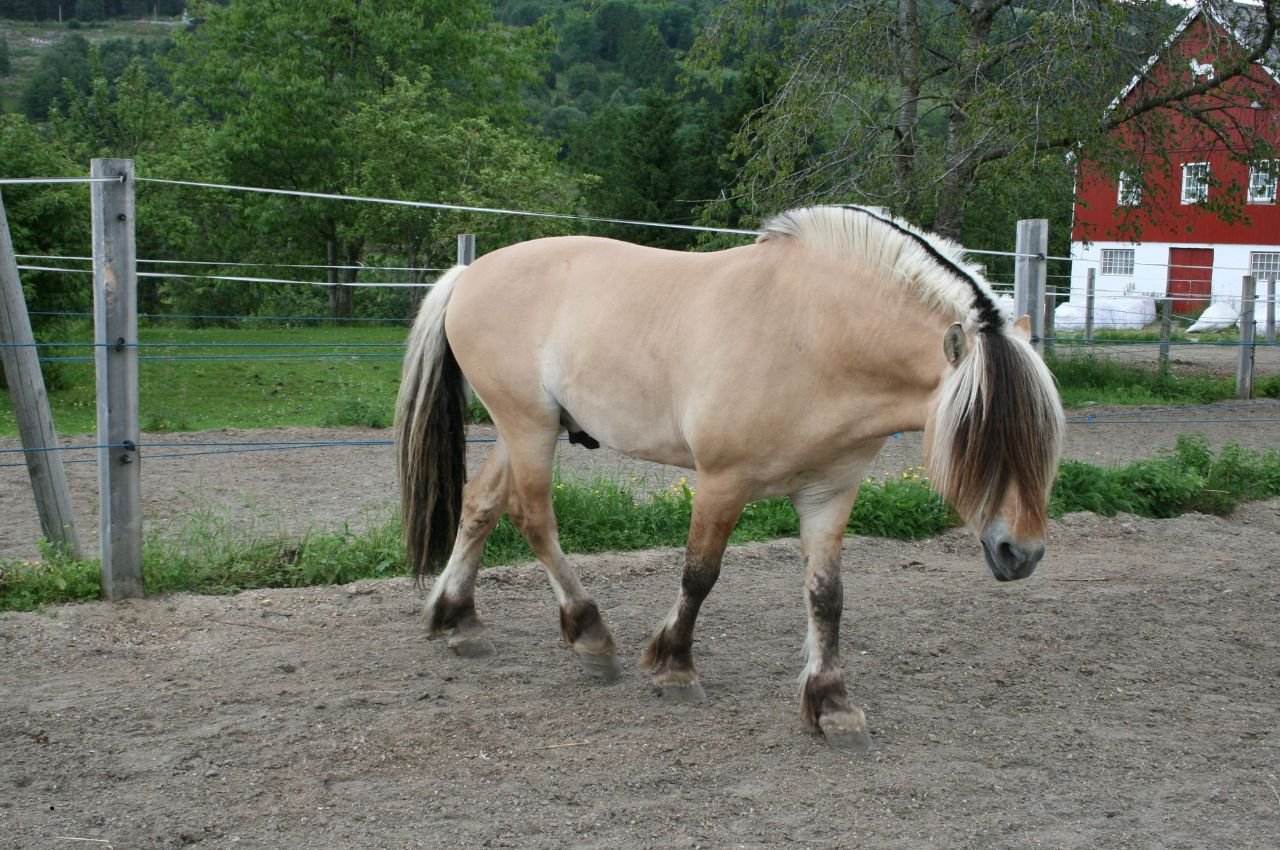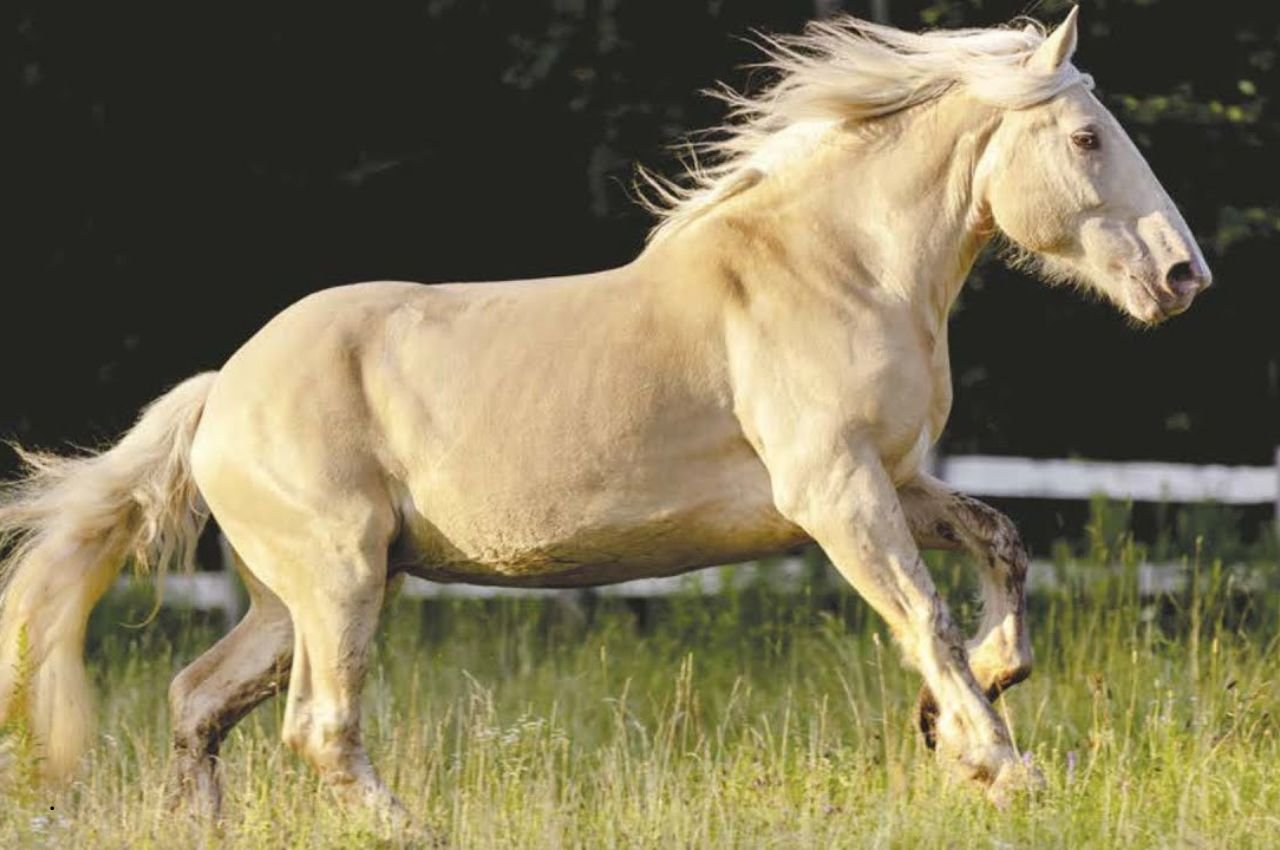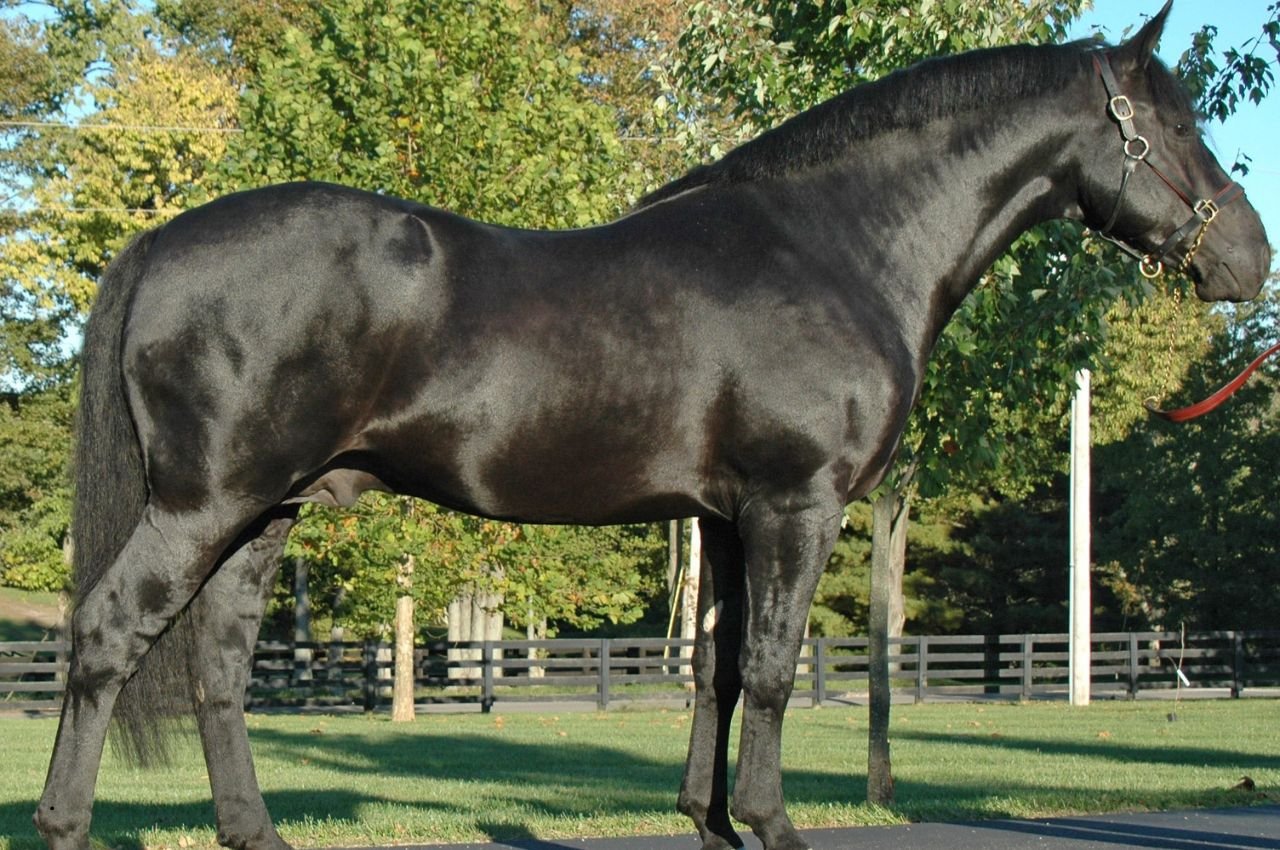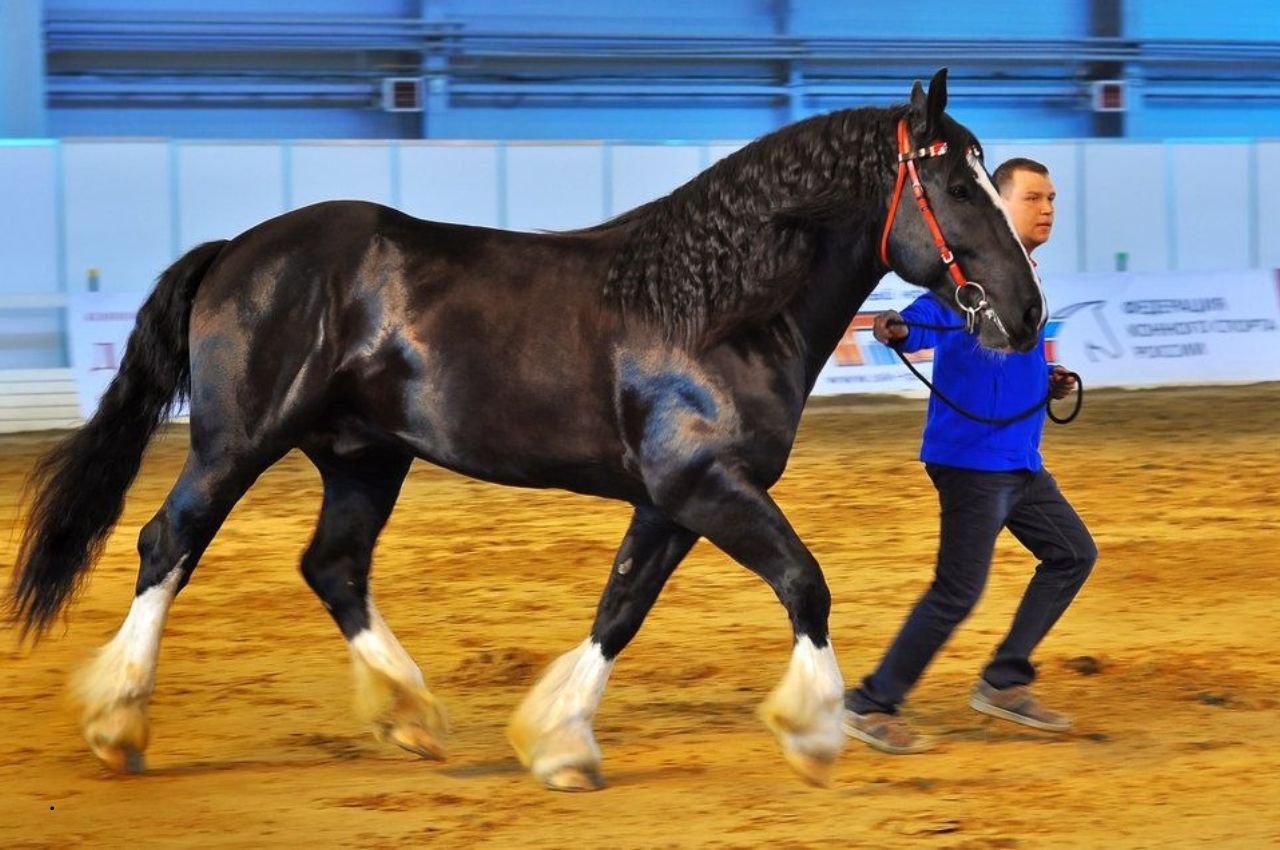Introduction to Meadow Hay
What is Meadow Hay?
Meadow hay is a type of forage made from a variety of native grasses, herbs, and sometimes legumes that grow naturally in meadows and pastures. Unlike more uniform hays such as timothy or alfalfa, meadow hay is a mixed grass hay, often composed of fescues, ryegrass, clovers, and other local plant species depending on the region it’s grown in. This diverse botanical makeup offers a broader spectrum of nutrients and flavors, making it a popular choice for feeding horses of all ages.
One of the biggest benefits of meadow hay is its variability. Because it’s grown in natural meadows, no two bales are exactly alike—this variety helps mimic the natural foraging behavior of horses, which is great for their gut health and mental stimulation. Horses are grazing animals, and in the wild, they’d be eating a range of plants throughout the day. Meadow hay supports that instinct, giving them a more natural diet compared to single-species hays.
However, because of this diversity, quality can be inconsistent if not sourced from a reputable supplier. Some batches may have too many weeds, or worse, toxic plants if the field isn’t properly managed. That’s why understanding what meadow hay is—and isn’t—is your first step to feeding horses right.
Table of Contents
Nutritional Value and Composition
Meadow hay’s nutritional profile can vary significantly based on when it’s harvested, where it’s grown, and what species of plants dominate the field. On average, good-quality meadow hay contains:
- Crude protein: 7–10%
- Digestible energy: 1.8–2.3 Mcal/kg
- Crude fiber: 25–35%
- Calcium: 0.3–0.6%
- Phosphorus: 0.2–0.4%
While these numbers might not sound too thrilling, they’re perfect for many adult horses that are not in heavy work. Meadow hay is often lower in sugar than some legume hays like alfalfa, making it a safer option for horses prone to metabolic issues, like laminitis or Cushing’s.
One of the key advantages of meadow hay is its fiber content. Horses require a high-fiber diet to maintain a healthy gut, and the range of grasses and herbs in meadow hay provide both soluble and insoluble fibers. These support not only digestion but also help with hydration as fiber holds water in the gut.
Because it’s generally less rich than alfalfa or orchardgrass, meadow hay can be fed in larger quantities, keeping horses chewing longer—important for both dental health and mental well-being. But always remember, not all meadow hay is created equal. Some may be too coarse or too stemmy, especially if cut late, and might not meet the needs of older horses or those with dental issues.
Why Meadow Hay is Preferred for Horses
Digestibility and Palatability
Let’s face it—horses can be picky eaters. Some hay may look fantastic to us but gets a big snort and a stomp from your four-legged friend. The good news? Meadow hay usually ranks high on the taste scale. Its variety of grasses and herbs often make it more palatable, especially to horses who get bored easily or have sensitive stomachs.
Horses naturally prefer forage that has a mix of textures and flavors. Meadow hay hits the mark by providing a medley of components, from soft leafy grasses to the occasional sweet-smelling clover or aromatic herb. This encourages even the fussiest horses to eat more roughage, which keeps their digestive systems running smoothly.
Digestibility is another major plus. Because meadow hay typically has a moderate fiber content and isn’t overly rich, it’s easier for horses to digest compared to richer hays like alfalfa. This reduces the risk of colic and other gastrointestinal issues. Additionally, the variety in plant species supports a diverse gut microbiome—something that modern equine diets often lack.
However, as much as horses may love meadow hay, it’s important to monitor their body condition. Too much of a good thing—even if it’s healthy—can lead to weight gain in easy keepers. But when balanced right, meadow hay is a great base for almost any horse diet.
Comparison with Other Types of Hay (Timothy, Alfalfa, Orchardgrass)
When you walk into a feed store or call up your local hay supplier, you’re often given several options: timothy, alfalfa, orchardgrass, and meadow hay. So how does meadow hay stack up?
Let’s break it down:
| Type of Hay | Crude Protein | Digestibility | Calcium | Ideal For |
|---|---|---|---|---|
| Meadow Hay | 7–10% | Moderate | 0.3–0.6% | General feeding, easy keepers |
| Timothy | 8–11% | High | 0.4–0.6% | Adult horses, moderate work |
| Alfalfa | 15–20% | Very High | 1.2–1.5% | Growing horses, lactating mares |
| Orchardgrass | 10–14% | High | 0.5–0.8% | Performance horses, weight gain |
Timothy hay is perhaps the most consistent in terms of quality and nutrition, making it a staple in many equine diets. Alfalfa is the heavyweight—it’s packed with protein and calcium, great for horses needing to gain weight or those in heavy training. But it can be too rich for the average pasture pet.
Orchardgrass falls somewhere in between—it’s softer than timothy and richer than meadow hay, often making it a middle-ground option.
What makes meadow hay stand out is its affordability and suitability for most horses that don’t require high-calorie or high-protein diets. Plus, its diversity makes it an ideal forage for horses prone to boredom or picky eating habits.
Tip #1 – Choose the Right Cut of Meadow Hay
First Cut vs Second Cut: Which is Better?
When selecting meadow hay, understanding the difference between the first and second cuts is crucial. Each cut comes with its own texture, nutrient profile, and suitability for different types of horses.
First cut meadow hay is harvested in early summer, typically around late May or June, depending on the climate. This cut is more fibrous, coarser in texture, and has a higher stem-to-leaf ratio. It tends to be bulkier and less nutrient-dense compared to later cuts. However, it’s rich in fiber and works well for horses that are easy keepers or prone to metabolic conditions. Since it provides a satisfying chewing experience without packing on too many calories, it’s ideal for horses that don’t require high energy intake.
Second cut, taken later in the season (July–August), is softer, greener, and leafier. It has higher protein content and more digestible energy, making it a better choice for horses with higher caloric demands—such as those in training, lactating mares, or underweight animals. Horses typically prefer the texture and taste of second cut hay because it’s more tender and aromatic.
The bottom line? Match the cut to the horse. A chunky pony in light work will thrive on first cut, while a competitive jumper or senior horse struggling to hold weight might do better with second cut. Always examine the hay closely—color, smell, and feel will tell you a lot about quality, regardless of the cut.
How Cut Timing Affects Nutrient Content
Timing is everything when it comes to harvesting hay. The stage at which the grasses and plants are cut directly affects the hay’s nutritional makeup and digestibility. Hay cut too early might be nutrient-dense but lack bulk and fiber, while hay cut too late is often overly mature and coarse—basically more filler than fuel.
When grasses are in the pre-bloom or early bloom stage, that’s the nutritional sweet spot. They contain the most balanced ratio of protein, fiber, and digestible energy. If hay is harvested after full bloom, it tends to be more fibrous and lower in nutrients, since the plant has redirected much of its energy toward seed production.
Weather also plays a role. A sunny dry spell is perfect for haymaking. Wet or humid conditions not only delay the cut but can lead to mold and spoilage if the hay isn’t dried properly. That’s why sourcing your hay from knowledgeable and experienced farmers is essential—they know how to time the cut to balance nutrition and quality.
So, next time you pick up a bale of meadow hay, don’t just ask about the cut. Ask when it was cut, how it was cured, and whether the farmer harvested at the optimal time for nutrition. These details can make a huge difference in your horse’s health and performance.
Tip #2 – Check for Quality Before Feeding
Visual and Physical Inspection
Never assume a bale is good just because it looks fine on the outside. When it comes to feeding your horse, quality control starts with your own senses—sight, touch, and smell.
Start with a visual inspection. Good meadow hay should be greenish, not dull brown or yellow. Green color indicates proper curing and nutrient retention. But be wary of overly bright green hay, as it may have been treated with additives to enhance appearance. Watch out for foreign objects like sticks, wire, or plastic. They’re not just contaminants—they’re dangerous.
Next, check the texture. Grab a handful and feel the hay. It should have a soft, leafy structure, especially in second cut. If it’s stiff and prickly, that’s often a sign of overmature hay. Horses will likely refuse it, and even if they eat it, they won’t get much nutritional value from it.
Now take a deep sniff. High-quality hay smells fresh and slightly sweet. Any musty, sour, or moldy odor is a red flag. Mold spores are invisible to the naked eye, but your nose will pick up the danger long before your horse does. Never feed hay that smells off—it’s not worth the risk of respiratory illness or colic.
Also, break open the bale. The interior can hide problems like dampness or hidden mold. Check for excessive dust, which can irritate a horse’s respiratory system. If you see white or gray spots inside the bale, that’s mold—toss it immediately.
High-quality hay is the foundation of your horse’s diet. Spend a few minutes checking each bale and you’ll avoid costly vet bills and keep your horses healthier and happier.
What to Avoid: Mold, Dust, and Weeds
Even the best-looking hay can hide serious problems. Here’s a quick guide to the top three hay hazards to watch for—and avoid at all costs:
- Mold: The silent killer. Mold spores develop when hay is baled too wet or stored in damp conditions. You won’t always see them, but they can be lethal. Moldy hay can lead to coughing, respiratory distress, colic, and even poisoning. If you even suspect mold, don’t feed it. Not even “just a little.”
- Dust: Excessive dust can irritate your horse’s lungs and eyes. In extreme cases, it can trigger equine asthma or cause long-term damage to the respiratory tract. Dusty hay is often the result of over-dry curing or poor storage. If you see a puff of dust when you drop a flake, it’s time to reassess your source.
- Weeds and Toxic Plants: Not all green is good. Weedy hay may contain invasive or toxic plants like ragwort, horsetail, or bracken. These can cause liver damage, neurological issues, or death. Some weeds are unpalatable and will simply be left uneaten, causing waste. Others can be ingested unknowingly, especially if dried and blended in with the grass.
Your hay should be as clean, fresh, and pure as you’d want your own food to be. Think of it this way: hay is your horse’s daily bread—so don’t feed them a moldy sandwich full of garbage.
Tip #3 – Feed According to Horse’s Activity Level
Adjusting Rations for Working vs Idle Horses
Feeding horses isn’t a one-size-fits-all task. Horses have vastly different energy and nutrient requirements based on their workload, size, and overall health. Feeding meadow hay properly means matching the quantity—and occasionally, the cut or type—to your horse’s daily energy expenditure.
Let’s break it down:
- Idle or retired horses: These horses need just enough hay to maintain body condition. Meadow hay’s moderate calorie and protein content makes it perfect for this group. Free-choice access to a good first cut is often ideal, promoting natural grazing behavior without causing weight gain.
- Light work (trail riding, occasional training): These horses may benefit from slightly more nutrient-dense hay or a mix of first and second cut. Depending on their weight and energy use, you may need to add a vitamin and mineral supplement to balance their diet.
- Moderate to heavy work (dressage, eventing, jumping): This group often requires second cut meadow hay or a blend with more calorie-rich forages like alfalfa or orchardgrass. These horses burn through energy quickly, and hay alone may not meet all their nutritional demands. You’ll likely need to add a grain concentrate or performance feed to keep them fueled.
In all cases, aim to feed 1.5–2.5% of your horse’s body weight in forage per day. For a 1,000-pound horse, that’s 15–25 pounds of hay daily, depending on their workload and metabolism.
Remember, it’s not just about how much hay—they need the right kind for their lifestyle. You wouldn’t feed a couch potato the same diet as a marathon runner, right? The same goes for your horse.
Tip #4 – Store Meadow Hay Properly
Importance of Dry, Ventilated Storage
One of the easiest ways to ruin high-quality meadow hay is to store it improperly. No matter how nutritious, clean, or well-cut your hay is, poor storage can quickly turn a great investment into an unusable mess. Dampness, mold, rodents, and spontaneous combustion are just a few of the risks you face without a proper setup.
The most crucial factor in hay storage is keeping it dry. Moisture is the enemy—it leads to mold growth, nutrient breakdown, and in extreme cases, spontaneous combustion. Even hay that feels dry when baled can retain internal moisture. If stacked too tightly or stored in an unventilated space, heat builds up, and fermentation begins. This not only degrades the hay’s quality but also becomes a serious fire hazard.
That’s where ventilation comes in. Always stack hay in a well-ventilated barn, loft, or shelter that allows air to circulate freely around and through the bales. Use pallets or rubber mats to lift bales off the ground and prevent moisture absorption from below. Leave gaps between stacks and walls to allow airflow. Avoid stacking hay directly against metal walls, which can cause condensation.
If you’re storing hay outdoors, invest in high-quality tarps or hay covers. These should be securely fastened and waterproof but allow for some breathability to prevent trapping moisture underneath. Better yet, use a hay shed or carport-style structure with a raised floor.
Storing hay well isn’t just about preserving quality—it’s about ensuring safety and maximizing the investment you’ve made in your horse’s diet. Take the extra time and effort to store your meadow hay right, and it’ll pay off in every flake you feed.
Avoiding Spoilage and Fire Hazards
Spoiled hay doesn’t just smell bad—it can be dangerous. Spoilage occurs when hay is exposed to moisture, whether from rain, humidity, or condensation, and begins to decompose. The signs of spoiled hay include a musty or sour odor, visible mold, dark spots, and an overly damp texture. Feeding spoiled hay can cause digestive issues, respiratory problems, and even colic or toxicity in horses.
One of the most overlooked risks of improper hay storage is spontaneous combustion. It might sound like something out of a movie, but it’s a very real threat on farms. When hay is baled while still too wet (typically over 20% moisture content), microbial fermentation begins. This process produces heat, and if that heat can’t escape, it builds up and can eventually ignite the hay. This is especially dangerous in large, tightly packed stacks with poor airflow.
To prevent this, always:
- Check moisture content before baling (if producing your own hay).
- Allow proper curing and drying time.
- Monitor internal stack temperatures for the first few weeks after storage—anything above 130°F (54°C) warrants close observation.
Using hay temperature probes can help identify hot spots early. If you detect rising heat in your stacks, separate the bales to let them cool and increase ventilation.
Don’t overlook rodents and pests either. Mice and rats love nesting in hay, contaminating it with urine and feces. This not only ruins hay but introduces health risks to your horses. Keep your storage area clean, use traps or deterrents, and inspect frequently.
In short, proper hay storage isn’t optional—it’s a non-negotiable part of good horse care. Protect your hay like you’d protect your horse’s feed room—because it is.
Tip #5 – Balance with Other Feeds and Supplements
Do Horses Need Grain with Meadow Hay?
Whether or not your horse needs grain alongside meadow hay depends heavily on their workload, age, and overall condition. While meadow hay provides a fantastic base diet, it doesn’t always meet the complete nutritional needs of every horse, especially those with higher caloric demands or specific dietary deficiencies.
For easy keepers—those who maintain weight easily—meadow hay alone may be enough, particularly if it’s a good second cut. In fact, adding grain in these cases could lead to weight gain or metabolic issues. Many horses in light work or at rest thrive on hay and a simple vitamin/mineral balancer.
For performance horses, broodmares, growing foals, or seniors, however, the story changes. These horses burn more calories, need more protein, and often require higher levels of specific nutrients like calcium, phosphorus, and lysine. Meadow hay alone may fall short here, especially in terms of energy and protein.
Adding a concentrated feed—such as a pelleted grain, sweet feed, or complete senior formula—can help bridge the nutritional gap. Look for options that are specifically formulated for your horse’s age and workload. These products often include added vitamins, minerals, fats, and amino acids that complement a forage-based diet.
It’s crucial to balance the feed ration. Overloading grain can disrupt your horse’s gut flora and increase the risk of laminitis and colic. Always introduce grains gradually and feed in small, frequent meals.
In essence, meadow hay is your horse’s foundation, but depending on their lifestyle, you might need to build on that with additional support.
Essential Vitamins and Minerals Often Lacking
Meadow hay is rich in fiber and reasonably nutritious, but like all preserved forages, it loses some vital nutrients during the drying and baling process. This means even the best hay might fall short when it comes to providing a fully balanced diet.
The key nutrients often lacking in a hay-only diet include:
- Vitamin E: Critical for muscle function and immune health. This antioxidant is heat- and light-sensitive, and levels in hay decline rapidly after cutting. Horses not on pasture need supplementation.
- Selenium: Works with Vitamin E but is highly variable in soil and hay. Deficiency can lead to muscle disorders, especially in performance horses.
- Copper and Zinc: Often found in low levels in grass hay. These trace minerals support coat health, hoof strength, and immune function.
- Salt (Sodium): Horses don’t get enough sodium from forage alone. Always provide a free-choice salt block or loose salt.
- Phosphorus and Calcium: Although hay does contain both, the ratio and amount can vary significantly. Balance is key to avoiding developmental issues, especially in young horses.
To correct these imbalances, many owners turn to ration balancers—concentrated pellets that deliver essential nutrients without extra calories. These are especially useful for horses that don’t need the energy boost from grain but still require complete nutrition.
You can also work with an equine nutritionist or use hay analysis to determine exactly what your horse is getting and what’s missing. Then supplement accordingly. Feeding horses right isn’t just about filling their stomachs—it’s about fueling their health from the inside out.
Tip #6 – Consider Your Horse’s Age and Health
Feeding Young, Senior, or Sick Horses
Not all horses digest and utilize nutrients the same way, especially when age and health come into play. Young horses, seniors, and those recovering from illness or injury all have unique dietary needs—and your choice of hay can make a significant impact.
Young horses (weanlings, yearlings, and two-year-olds) are in a critical phase of development. They require higher levels of protein, calcium, and phosphorus to support bone growth and muscle development. While meadow hay provides essential fiber and roughage, it often doesn’t offer enough nutrients for growth on its own. These horses typically need additional high-quality protein sources and a balanced concentrate feed. Pairing meadow hay with alfalfa or a developmental ration may be necessary to meet growth demands.
Senior horses often face challenges like worn teeth, reduced digestive efficiency, and chronic health issues such as arthritis or Cushing’s disease. Coarse or stemmy hay can be difficult for them to chew and digest, leading to weight loss or impaction colic. For seniors, second cut meadow hay—softer and leafier—is easier to consume. In some cases, chopped hay, hay cubes, or soaked hay pellets may be better options to ensure they still receive adequate fiber and nutrients.
Horses with health conditions—such as insulin resistance, ulcers, or allergies—may also require special considerations. Meadow hay is usually lower in sugars compared to some legume hays, which makes it a safer option for horses with metabolic disorders. However, testing the hay for non-structural carbohydrates (NSC) is wise if your horse has laminitis or similar concerns. Aim for an NSC below 10% for these horses.
In all these cases, consulting with a veterinarian or equine nutritionist can help tailor the diet to the individual horse, ensuring optimal health and performance.
Preventing Choke and Dental Issues
Choke is a serious and potentially life-threatening condition in horses, caused when food becomes lodged in the esophagus. While it’s often associated with grain, hay—especially coarse, fibrous hay like poorly cut meadow hay—can also be a culprit. Horses that eat too quickly, have dental issues, or are fed overly dry or stringy hay are particularly at risk.
To prevent choke, follow these steps:
- Check dental health regularly: Schedule annual dental exams to file sharp edges or remove problematic teeth.
- Soften the hay: If hay is too coarse, consider steaming it or lightly soaking to make it more pliable.
- Use slow feeders or hay nets: These slow down consumption and reduce gulping.
- Break flakes into smaller portions: Don’t throw an entire flake at once if your horse tends to bolt his food.
- Avoid feeding hay from the ground in sandy areas: This can cause sand ingestion, leading to digestive issues.
Dental health goes hand-in-hand with safe feeding. If your horse drops feed, chews awkwardly, or leaves wads of hay, it’s time for a dental check-up. Never underestimate the importance of the mouth in determining how well your horse can use the food you provide.
Tip #7 – Provide Clean Water at All Times
Importance of Hydration with Hay Diets
Feeding your horse the best meadow hay in the world won’t mean much if they’re not drinking enough water. Hay is significantly drier than pasture grass, containing only about 10-15% moisture compared to fresh grass’s 70-80%. This difference makes hydration even more essential when hay is a major part of the diet.
Water supports nearly every bodily function—from digestion and nutrient absorption to temperature regulation and joint lubrication. Horses eating mostly dry forage like meadow hay will need to increase their water intake to compensate for the loss of moisture in their diet.
Here’s what you can do:
- Provide fresh, clean water at all times—yes, even in winter.
- Check and refill troughs or buckets twice daily.
- In cold months, consider using heated buckets or water heaters to prevent freezing.
- If your horse is reluctant to drink, try adding electrolytes or flavorings (like apple juice) to encourage hydration.
- Offer soaked hay pellets or beet pulp as supplemental water sources.
Signs your horse might be dehydrated include dry gums, dull eyes, poor skin elasticity, and reduced manure output. If in doubt, do the skin pinch test—pinch a small section of skin on the neck; if it doesn’t snap back quickly, dehydration may be present.
Proper hydration complements a hay-based diet and helps prevent common issues like impaction colic, especially during seasonal transitions when horses may reduce water intake.
Signs of Dehydration and Prevention Tips
Dehydration in horses can creep up quietly, but its effects can be dangerous—ranging from decreased performance and muscle cramping to colic and even kidney damage. Knowing the signs and prevention strategies is crucial for any horse owner feeding a hay-heavy diet.
Signs of dehydration include:
- Sticky or dry gums
- Sunken eyes
- Lethargy or dullness
- Decreased skin elasticity (check with the pinch test)
- Dark, dry manure
- Increased heart rate or respiratory rate
To prevent dehydration:
- Always keep water accessible, regardless of weather.
- Monitor daily water intake—most horses need 5–10 gallons per day, more in hot weather or when working.
- Add salt or electrolytes to encourage drinking.
- Soak hay, cubes, or feeds to increase water consumption through meals.
- Clean water containers daily—dirty water discourages drinking.
Your horse may be eating plenty of hay, but without enough water, digestion slows down, and health risks go up. Keep the water flowing, and your horse will thank you with better health and performance.
Common Mistakes Horse Owners Make
Overfeeding or Underfeeding Hay
Striking the right balance with hay feeding is more art than science. Overfeeding can lead to obesity and metabolic issues, while underfeeding can cause weight loss, behavioral problems, and digestive upset. Many horse owners misjudge how much hay their horse truly needs—or assume “more is better” without considering caloric needs.
To get it right:
- Feed 1.5–2.5% of your horse’s body weight in hay daily. For a 1,000-lb horse, that’s roughly 15–25 pounds of hay.
- Use a hay scale or luggage scale to weigh flakes—you’ll be surprised how much variation exists!
- Adjust based on body condition score (BCS)—a number from 1 (emaciated) to 9 (obese). Aim to keep horses at a 4–6.
Also, avoid tossing large flakes or round bales without measuring intake. Horses that get bored or anxious can overeat, while others may push hay around, trample it, and waste most of it.
Monitoring your horse’s condition regularly—and making gradual adjustments—is key to hay feeding success.
Ignoring Storage and Hay Quality
Letting hay sit in a damp corner of the barn or feeding it straight from a tarp-covered pile without checking quality is asking for trouble. Mold, dust, and poor nutrition are the fast track to vet bills and underperforming horses.
Common storage mistakes include:
- Stacking hay directly on dirt or concrete floors (leading to moisture absorption)
- Storing hay too close to walls without ventilation
- Skipping regular inspections of bales
- Letting mice or other pests run wild
Poor-quality hay doesn’t just affect the horse’s health—it also means wasted money. Spoiled hay ends up in the manure pile, not in your horse’s belly. Keep hay off the ground, dry, and out of sunlight. Store it as if you were going to eat it yourself.
Conclusion
Feeding horses right doesn’t have to be complicated, but it does require awareness, effort, and a little bit of know-how. Meadow hay is an excellent, versatile forage choice that works for a wide range of horses when sourced, stored, and fed correctly. From choosing the right cut to understanding your horse’s specific needs, each tip we’ve discussed contributes to better nutrition, improved health, and a happier horse overall.
It’s not just about the hay—it’s about the whole picture. Are you storing it properly? Checking for mold? Adjusting for workload? Balancing nutrients with supplements? Hydrating your horse? All these factors work together to create a solid feeding plan that keeps your equine partner in peak condition.
Remember, horses were built to graze—and meadow hay is the closest thing to a natural pasture diet you can put in a bale. Get it right, and you’re not just feeding your horse; you’re fueling their best life.
FAQs
Can horses eat meadow hay every day?
Yes, most horses can safely eat meadow hay every day. It’s especially suitable for horses at maintenance, easy keepers, or those with metabolic issues, provided it’s clean and of good quality.
How much meadow hay should I feed per day?
Generally, you should feed 1.5–2.5% of your horse’s body weight in hay daily. For a 1,000-pound horse, that’s around 15–25 pounds of hay per day, depending on activity level and condition.
Is second cut better than first cut for all horses?
Not necessarily. Second cut is softer and more nutritious but may be too rich for easy keepers. First cut is higher in fiber and lower in calories, making it better for idle horses or those prone to weight gain.
What’s the best hay for senior horses?
Soft, leafy second cut meadow hay or a blend with alfalfa is often best for seniors, especially those with dental issues. Chopped or soaked hay can also help make feeding easier and safer.
How long can I store meadow hay safely?
Properly stored, dry meadow hay can last 12–18 months without significant nutrient loss. Store it in a cool, dry, ventilated area away from direct sunlight and moisture for best results.


